The pyramids originally were covered in a smooth surface, as in the closeup view of the middle pyramid. Now, the building blocks are exposed and when you compare them to the people, it is inconceivable how the blocks were brought to Giza, placed higher and higher until they reached their peak.
There is an entrance in the Great Pyramid that you can enter but given that it was over 100F, and the inside is even warmer, we opted to pass on this visit. The day before we arrived, egyptologists found a new room in this pyramid.
The iconic Sphinx is there to guard the pyramids. Again, the size is immense and must have been a feat of amazing calculations how to create this.
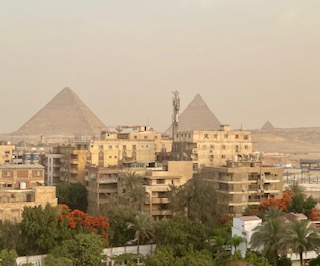
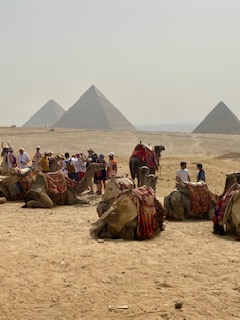
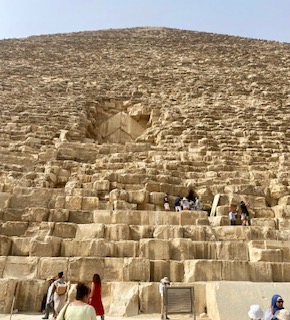
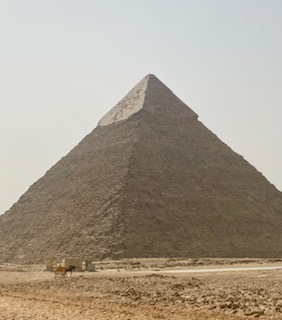
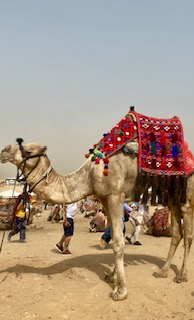

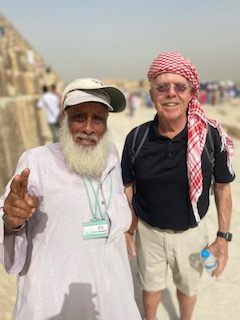
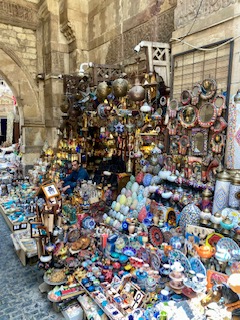

Cairo
The Egyptian Museum is a marvel, filled with statues, sarcophagus of past pharoahs, and a variety of items found throughout Egypt with the largest collection of Egyptian antiquities in the world. The museum is in flux as some of the treasures and mummies have been transferred to the new, modern museum adjacent to Giza and the Pyramids. But what remains is still impressive. King Tutenkhamun statues and his sarcophagus are a big draw. However, there is so much more to see. The building itself is grand and well thought-out.
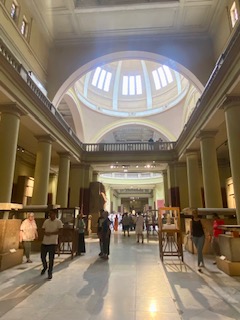
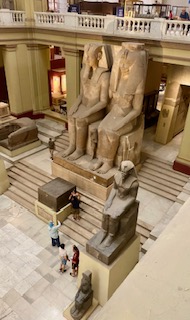
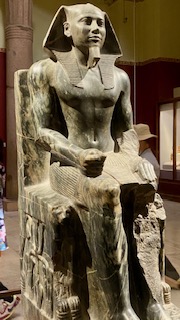
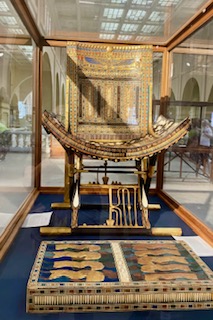

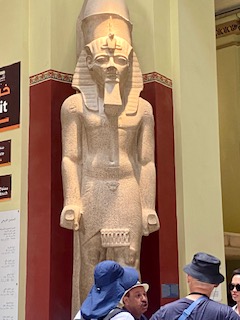

Although fine hotels and restaurants are located downtown in Cairo, most Egyptians live in squalid-looking high-rise buildings that were obviously not fitted with air conditioning when built. These buildings, some of which are half demolished by the government, are everywhere in a city of over ten million people. The city has grown and now almost invades the area of the Pyramids. There is a new satellite city that started about twenty years ago, called New Cairo. It is the home to Africa’s tallest tower and Middle East’s largest cathedral. It languished for many years, but is now flourishing, with new construction of homes (even single family), golf courses, shopping centers and more, planned for more than six million residents and designed to relieve traffic and other stresses on the crumbling infrastructure in Cairo.
The Fort (or Citadel) is a medieval Islamic-era fortification. It was the seat of government and the residence of its rulers for nearly 700 years, from the 13th century. It sits atop a hill for a view of the city incase of invaders.
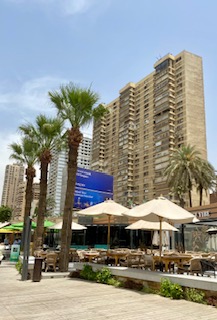

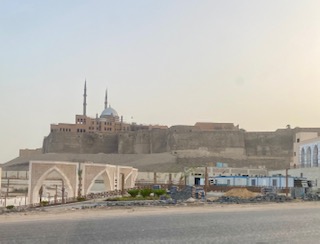
Truthfully, I will not miss being in Cairo. I look forward to seeing more of what Egypt has to offer.
